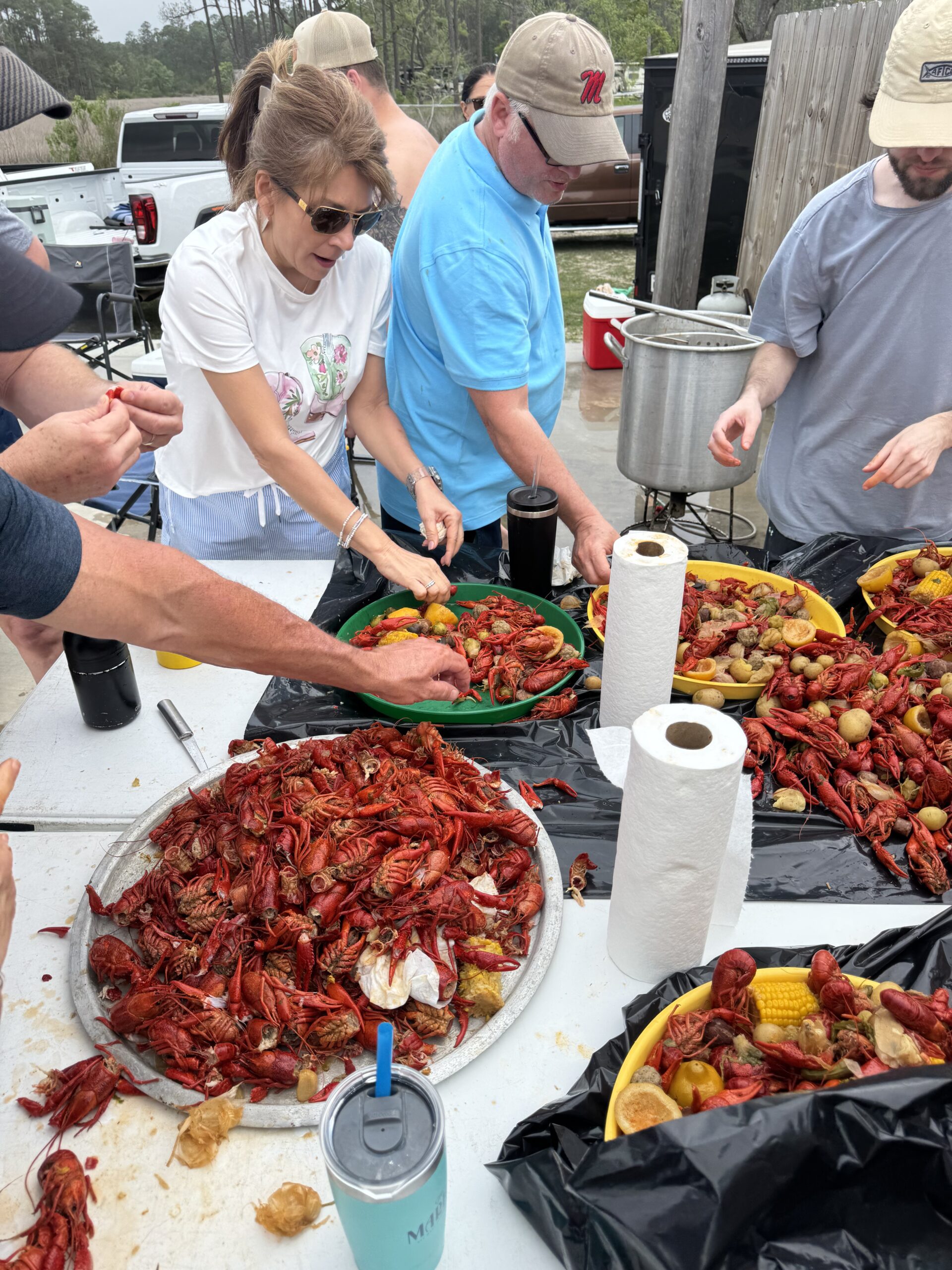Many in the South anticipate the annual crawfish season as this is a great time to socialize around a crawfish boil. Many pounds of crawfish are consumed at a crawfish boil but that’s not the only way people consume crawfish. I have a story to tell. Years ago I attended a conference in Lafayette Louisiana, a place that I had never been to before.
None of the people I was going with knew anything about the activities surrounding the conference. Generally, dinner was either included or we would go out in groups to local restaurants. This time we were told a special event was planned after the conference on one of the days. They said it was a crawfish boil. I had no idea what that was and neither did any of the people that I came with.
We were told to dress very casually, not a strange request but were were all wearing suits. I bought jeans for the trip home and a casual shirt. It was a warm spring night. The event was held at the hotel on their large patio and gardens.
Picnic tables arranged in long rows
We went out and there was an open bar so everyone found their way to their first drink. There were picnic tables arranged in long rows with trash cans at the ends. Again, not unusual for a large group.
People were cooking stuff in large pots away from the tables, and there was lots of activity on the part of the cooks. Shortly thereafter we were told to sit at the tables. Just as soon as we sat down, they started to pour steaming pots of food on the table. Corn on the cob, sausage, vegetables, and tons of crawfish, piles of them. A few people showed us how to peel the crawfish.
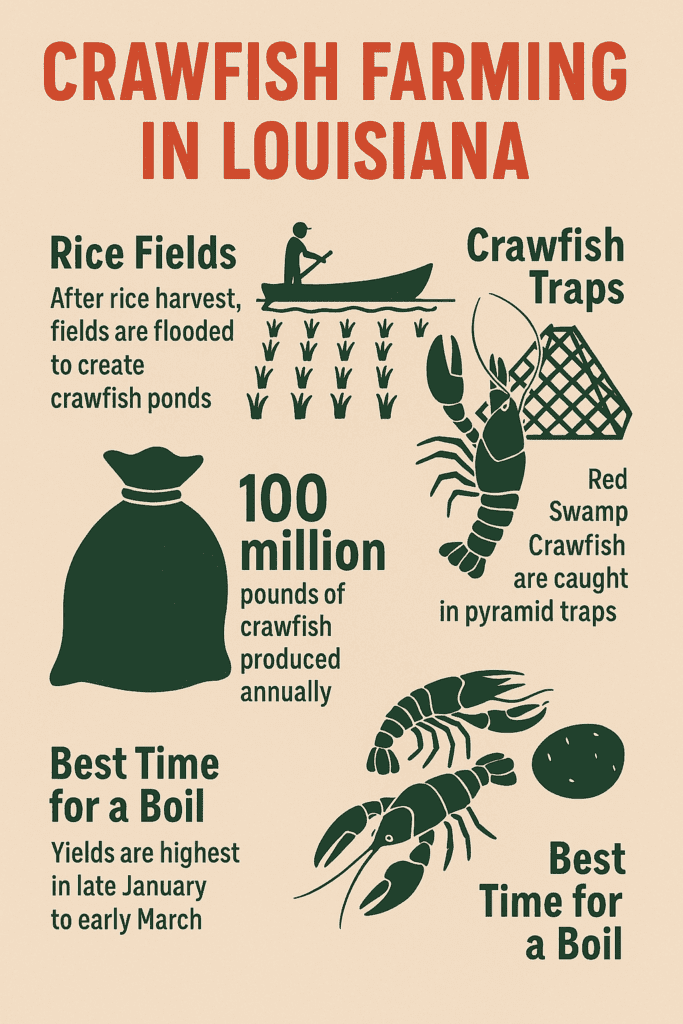
I started to reach for the goodies. I found a new potato that was delicious. Next, I tried corn, wow it was spicy but great and it did not need salt or butter. I grabbed a sausage and well, I was in heaven. Then I ventured into the pile of crawfish looking for a bigger one (thinking bigger was better). The first few were a bust, I tore them apart trying to get the meat from the tail. Then I found my pace and got better at it.
After a while I was able to “pinch” the tail meat right out, and everyone was having fun. The spice of everything was challenging for some but I loved it. Without a doubt, massive quantities of beer were consumed in an effort to tamp down the heat. I was not a beer drinker so I asked for iced tea. Wow, you could have stood a spoon in the glass there was so much sugar.
Came to the rescue with Iced Tea
Finally, a waiter saw my problem and came to the rescue with unsweetened iced tea. I learned later that iced teal ALWAYS comes with sugar unless you specify no sugar. Not to get off the topic about crawfish, I have found later that more often than not when you order unsweetened tea, it comes sweetened anyway.
All of us at the event were covered in crawfish juice and vegetables. They gave out bibs but real men and women don’t use a bib so all of us had to pack our shirts and blouses in a plastic bag for the trip home. The crowd at the sinks to wash up was backed out the door.
You really need to scrub to get the spices off your fingers. I was told once that men should go to the bathroom before starting their crawfish boil because with all of that spice on your hands, you don’t want to touch anything sensitive.
Most of the people attending had a great time. The few that were on the fence about it were there because of the spice level in everything. They probably went to their rooms and ordered a hamburger. This was my first taste of these critters sometimes called mudbugs and I loved every minute. This article may make you want to plan a trip to the Mississippi Gulf Coast during Crawfish season for your own taste of the south.

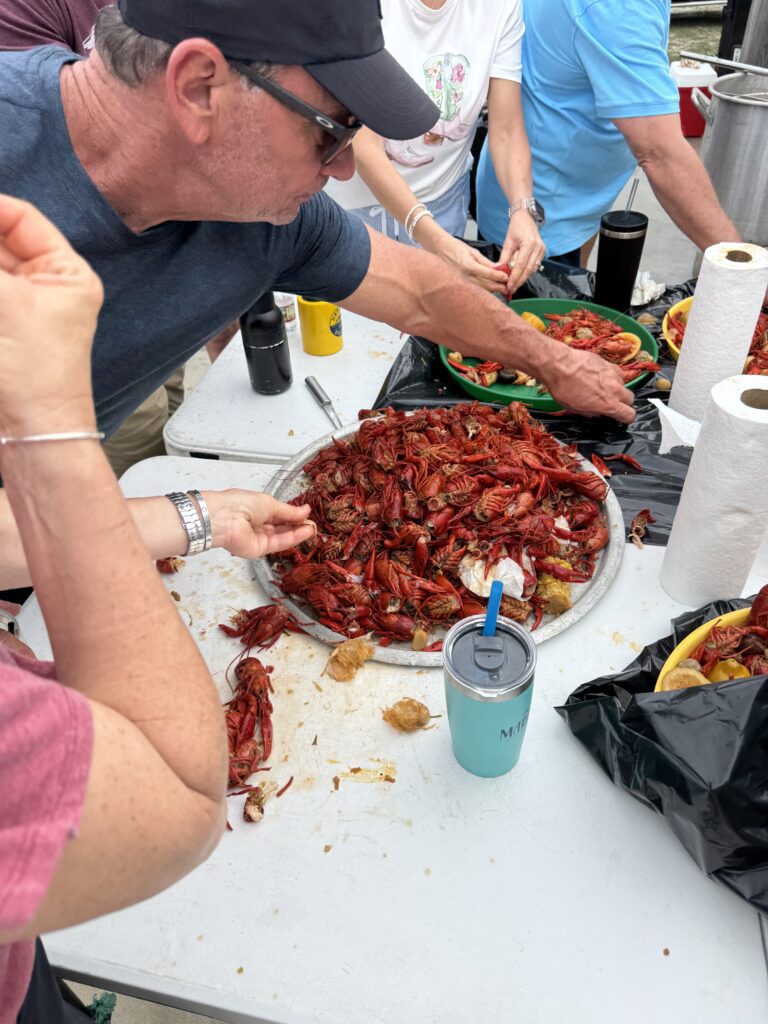
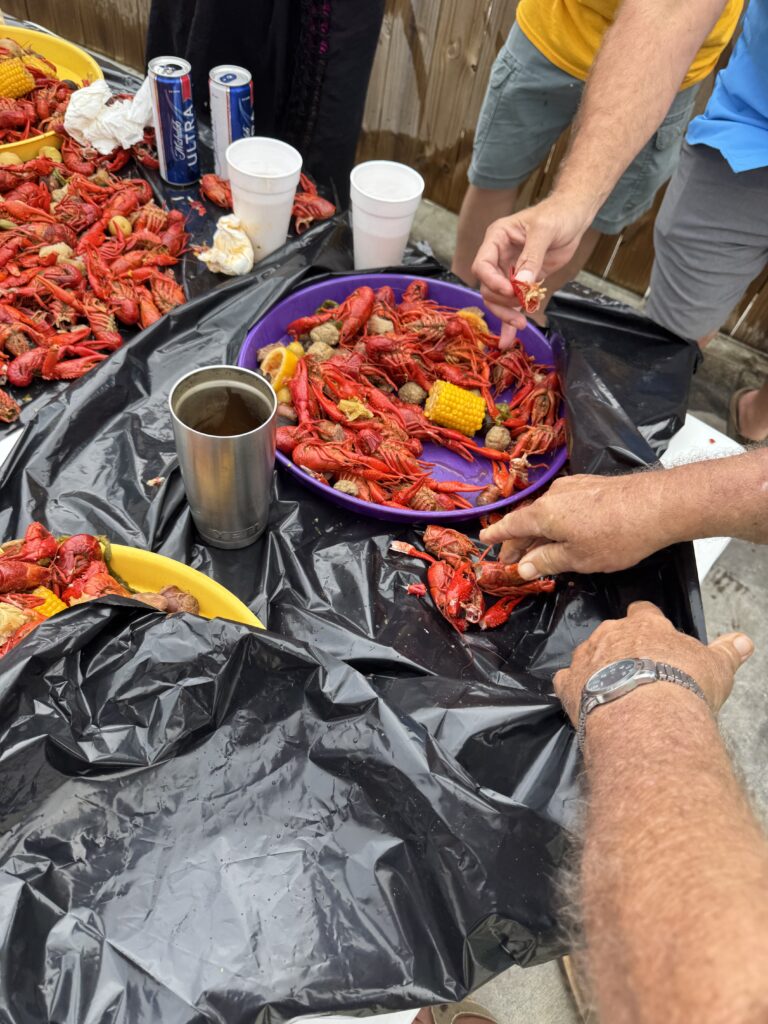
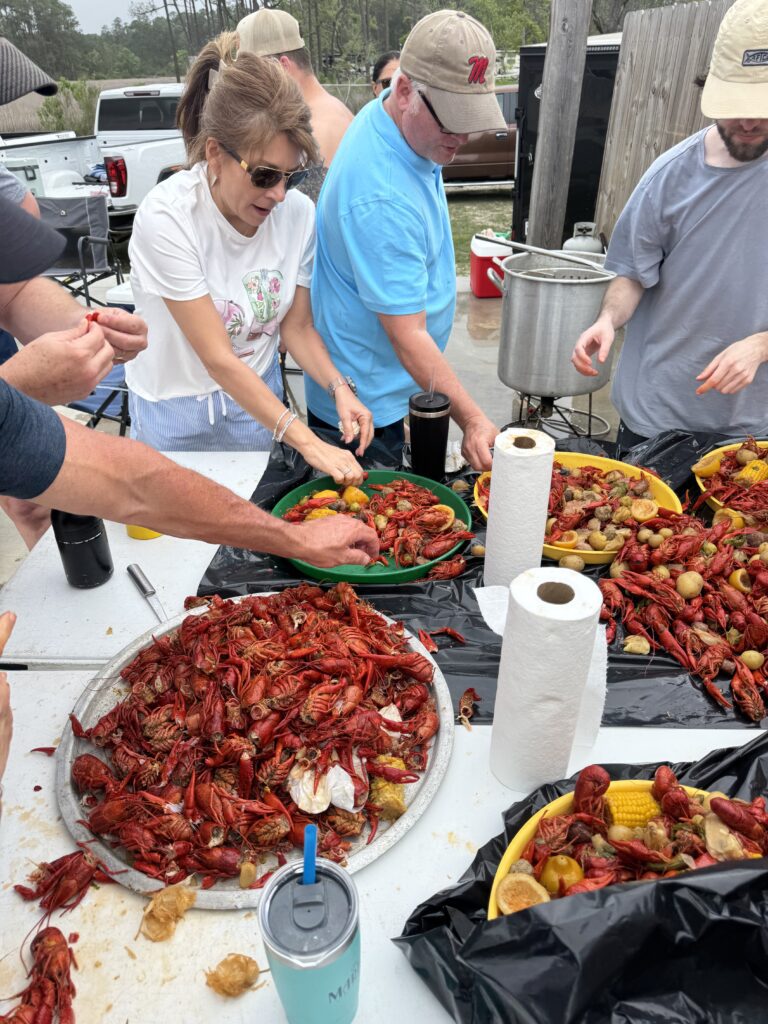

Just What Are Crawfish?
Crawfish—also known as crayfish, crawdads, or mudbugs—are freshwater crustaceans that resemble small lobsters. These hardy creatures are found in rivers, lakes, streams, and swamps across many parts of the world, from Europe and Asia to Australia and North America. In fact, there are over 500 species of crawfish globally, with more than 300 native to the United States alone.
In the U.S., Louisiana is the undisputed capital of crawfish production. The state’s unique combination of warm climate, flat terrain, and rice-farming infrastructure provides the ideal environment for large-scale crawfish farming.
Crawfish are often raised in shallow ponds, many of which are dual-purpose rice fields. After the rice is harvested, the fields are flooded and seeded with crawfish—a sustainable cycle that supports both agriculture and aquaculture.
While wild crawfish are still harvested, the majority of crawfish consumed today in the U.S. are farm-raised in Louisiana, where the crawfish industry is a vital part of the culture, economy, and culinary tradition. From backyard boils to restaurant menus, crawfish play a starring role in Southern cuisine and continue to gain popularity nationwide.
What Are Crawfish Related To?
Crawfish are closely related to lobsters, shrimp, and crabs—all of which belong to the crustacean family. They share the same hard exoskeleton, jointed legs, and segmented bodies. Of all their relatives, crawfish most closely resemble miniature lobsters, and the two even share a similar flavor when cooked, although crawfish tend to be sweeter and more tender.
Despite their small size, crawfish are biologically fascinating. Like their ocean-dwelling cousins, they are scavengers and omnivores, feeding on everything from plants and algae to small insects and decaying matter. Their role in the ecosystem helps keep freshwater environments clean and balanced.
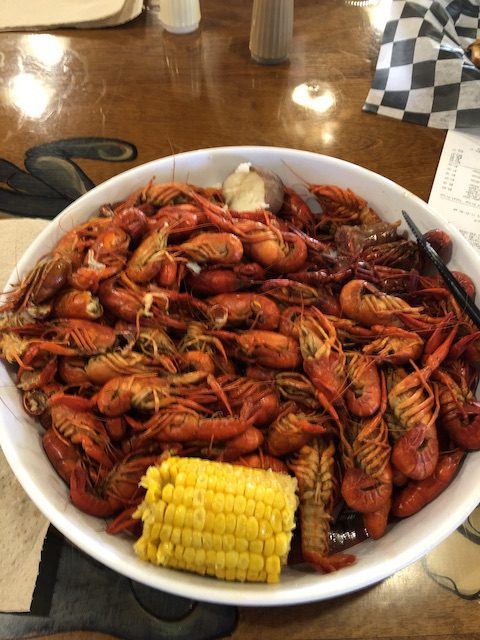
How Long Do Crawfish Live?
In the wild, most crawfish live about 2 to 3 years, although their lifespan can vary depending on the species, water conditions, and predation. In a farm setting, they are usually harvested much earlier—typically between 3 to 7 months after hatching—depending on the season and size demands.
How Big Do Crawfish Get?
Crawfish grow by molting their exoskeleton several times during their life. Most commercially harvested crawfish are about 3 to 5 inches long, including the tail and claws. However, some species can grow larger. The Red Swamp Crawfish, which is the most commonly farmed species in the U.S., usually tops out at about 5 inches, while a few rare wild species can reach lengths of 6 inches or more.
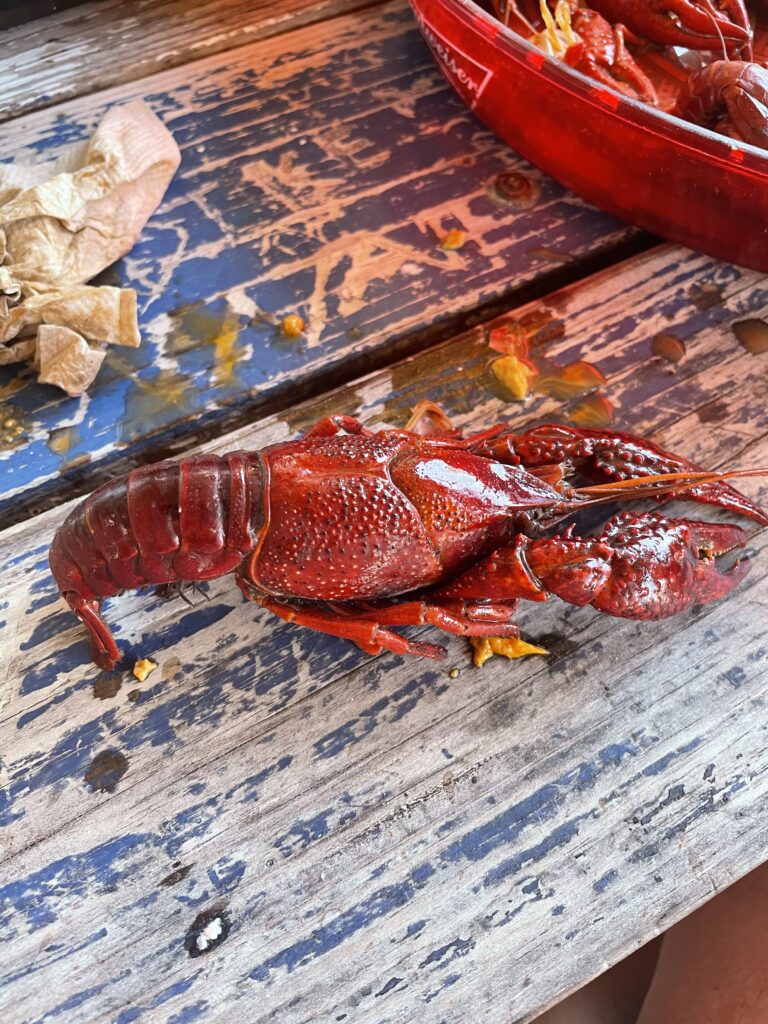
Crawfish Farming in Louisiana: A Way of Life and a Global Operation
Crawfish farming in South Louisiana is more than just an agricultural practice—it’s a deeply rooted way of life. From the bayou state’s vast rice fields to family-run farms like Frugé Aquafarms, Louisiana leads the United States in crawfish production, harvesting millions of pounds of crawfish each year. These farm-raised crawfish are a staple in seafood markets, grocery stores, and traditional crawfish boils throughout the Gulf Coast and beyond.
The cycle of crawfish farming begins after the rice farmers harvest their farm’s principal crop. The fields are flooded in late fall, creating shallow ponds ideal for baby crawfish to thrive. Over the winter months, the water temperature plays a critical role—cooler temps slow growth, while a mild winter helps bring fresh crawfish to market earlier. That’s why late January to early March, right around Mardi Gras, is often considered the best time to enjoy delicious crawfish at their peak.
The flooded rice paddies are stocked with Red Swamp Crawfish, the most commonly farmed species in Louisiana. Crawfish are caught using pyramid traps, often baited and set from flat-bottom boats or even manual push boats that maneuver between rows of levees. Each trap is checked daily, and yields vary depending on environmental conditions rainfall, water temperature, and predator activity. A warm, wet winter can mean high production, while a dry season or cold snap can result in smaller crawfish or empty traps.
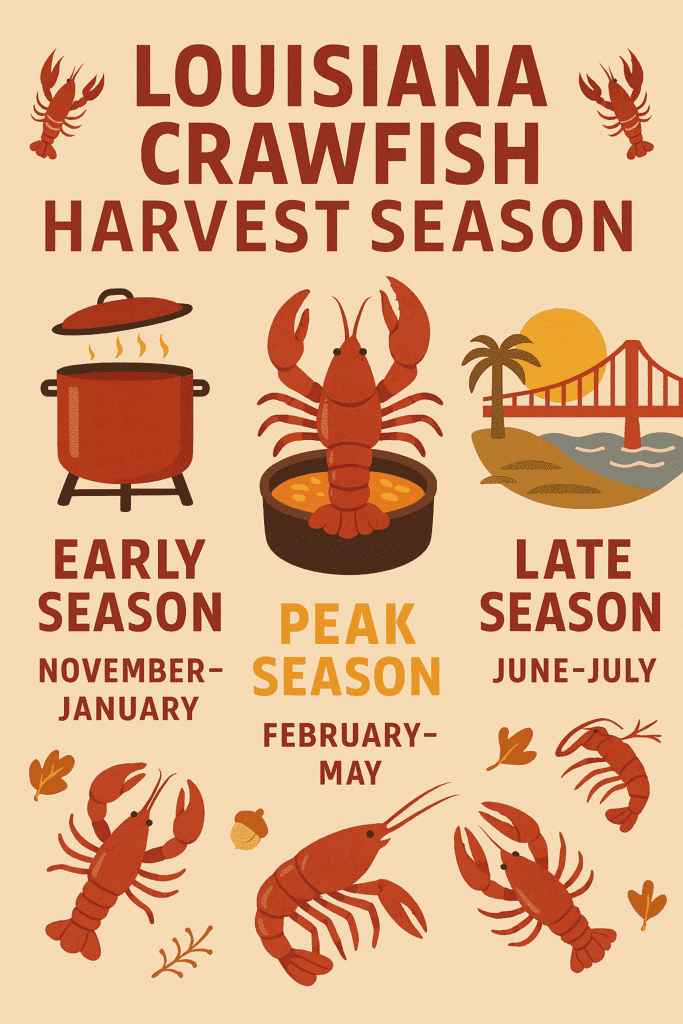
100,000,000 pounds of Crawfish Annually
At full swing, Louisiana’s crawfish industry produces more than 100 million pounds of crawfish annually, a mix of wild-caught crawfish and those raised on farms. These delectable crustaceans are then sorted, cleaned in crawfish washing tubs, and packaged—either as live crawfish for local boils or processed into crawfish tail meat at facilities like the Frugé Seafood Company’s processing plant.
Their specialized distribution arm ensures that Louisiana crawfish reaches consumers across the country and even internationally, giving this pretty amazing global operation its reach.
One farm in particular, Frugé Aquafarms, operated by Mark Frugé and made popular by Daniel Geneen, has gained national attention for its quality and innovation. Mike Frugé of Cajun Crawfish is another name well-known in the industry for helping expand Louisiana’s role as a new source of food to the world.
HEALTH BENEFITS OF EATING CRAWFISH

🩺 Health Benefits of Eating Crawfish
Crawfish aren’t just delicious—they’re surprisingly nutritious, too. These freshwater crustaceans pack a flavorful punch while offering a number of health benefits, especially when enjoyed in moderation and prepared in healthy ways (think: grilled, stewed, or lightly sautéed instead of deep-fried).
Here’s why crawfish tail meat deserves a place on your plate:
💪 High in Lean Protein
Crawfish are an excellent source of lean protein, with about 15 grams of protein per 3-ounce serving. Protein helps build and repair tissues, supports immune function, and keeps you feeling full longer—making it great for weight management.
❤️ Low in Calories and Fat
A 3-ounce serving of crawfish contains only about 70–90 calories and less than 1 gram of fat. Unlike fatty meats, crawfish give you a satisfying flavor with minimal fat—especially if you skip the butter dip.
🧠 Packed with B Vitamins
Crawfish are rich in B vitamins, especially vitamin B12, which supports brain health, red blood cell production, and energy metabolism. They also provide niacin, riboflavin, and folate, which contribute to overall wellness.
🦴 Good Source of Minerals
These delectable crustaceans provide essential minerals such as:
- Zinc – for immune support and wound healing
- Iron – critical for red blood cell production
- Phosphorus – important for bone health
- Selenium – a powerful antioxidant that supports thyroid function
🐟 Low in Mercury
Unlike some larger seafood species, crawfish are low on the food chain and have very low levels of mercury, making them a safer choice—especially for pregnant women and children when eaten in reasonable portions.
🧂 Bonus Tip: Watch the Sodium
One note of caution—seasoned crawfish boils can be high in sodium due to the spice blends and boiling salts used. If you’re watching your blood pressure or salt intake, balance your crawfish dishes with fresh vegetables and drink plenty of water.
🧾 Final Thought
Whether served in a crawfish étouffée, tossed into a salad, or enjoyed fresh from a traditional crawfish boil, these delicious crustaceans offer more than just rich flavor—they deliver serious nutritional value. And when paired with sides like sweet potatoes, corn, and Brussels sprouts, you’ve got a meal that’s as healthy as it is hearty.

Harvests typically begin in late January and continue through early summer, following the natural two-year cycle of the rice crop. The best farms know that timing, water control, and knowing when to rotate to the next crop are crucial for maximizing yield and quality.
Crawfish farming is labor-intensive, relying on hands-on methods that involve conveyor belts, manual push boats, and human intuition—a blend of science and tradition that some affectionately call crawfish magic.
Whether served on crawfish trays at a roadside boil or poured onto a picnic table lined with newspapers, whole crawfish remains one of the Gulf South’s most iconic foods. It’s no surprise that the demand continues to grow, even making its way to foodie websites and becoming part of pop culture—there’s even an episode of The X-Files referencing the peculiar world of Louisiana’s crawfish.
From wild crawfish to precision-farmed crustaceans, crawfish in Louisiana represent not only a perishable product but a cultural identity. As the season kicks into full swing, it’s always a good idea to grab a sack of crawfish, gather some friends, and enjoy one of the tastiest traditions in America.
🦐 The Crawfish Boil: A Southern Tradition
A crawfish boil is more than just a meal—it’s a celebration, a social event, and a time-honored Southern tradition that brings people together around picnic tables covered in newspaper and loaded with steaming, spicy whole crawfish, new potatoes, corn, and more.
Here’s how to create your own perfect crawfish boil—from the tools and ingredients to the seasoning mix and cooking time.
🔧 Implements & Equipment
To host a successful boil, you’ll need:
- Large boiling pot (60–100 quarts depending on your crowd size)
- Propane burner and tank
- Paddle or long stirring spoon
- Crawfish strainer basket or wire basket insert
- Large ice chest (for holding live crawfish)
- Crawfish trays or a long table for serving
- Garden hose (for cleaning)
- Gloves (optional, for handling hot items or spicy seasoning)
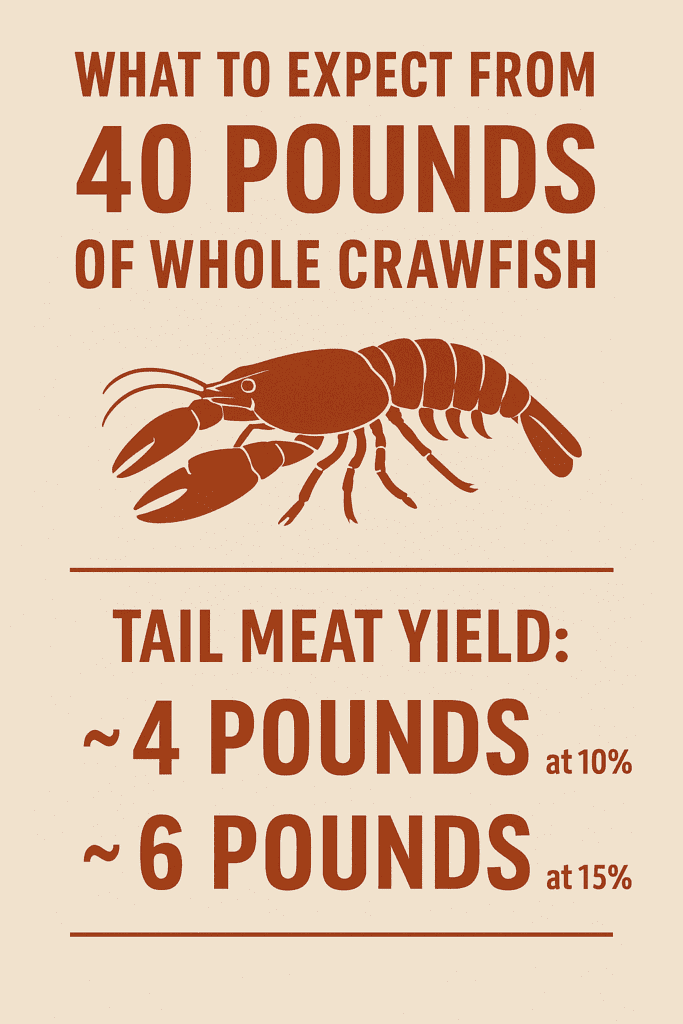
🛒 Ingredients (for 30–40 lbs of crawfish)
- 30–40 lbs of live crawfish
- 10 ears of corn, halved
- 3 lbs of small new potatoes
- 2 lbs of smoked sausage, cut into chunks
- 2–3 whole onions, halved
- 2 heads of garlic, halved crosswise
- 2–3 lemons, halved
- 1 lb mushrooms (optional)
- Brussels sprouts, artichokes, or sweet potatoes (optional additions)
- Butter (for post-boil drizzling)
- Liquid crab boil (like Zatarain’s or Louisiana Fish Fry)
- Dry seasoning mix (see below)
🌶️ DIY Crawfish Boil Seasoning Mix
Here’s a basic homemade seasoning mix you can adjust to taste:
- 1 cup Cayenne pepper
- ½ cup Paprika
- ½ cup Garlic powder
- ½ cup Onion powder
- 2 tablespoons Dried thyme
- 2 tablespoons Dried oregano
- 3 tablespoons Salt
- 2 tablespoons Black pepper
- 1 tablespoon Red pepper flakes
- 2 tablespoons Lemon pepper seasoning
Mix thoroughly and store in an airtight container. Use ½ to ¾ cup per gallon of water.
⏱️ The Boil Process
- Purge and rinse the crawfish: Place live crawfish in a large cooler or tub. Rinse several times with fresh water until the water runs clear. Some add salt to purge, though many experts (including Mark Frugé) say it’s unnecessary.
- Fill the pot with water and bring it to a rolling boil. Add in liquid crab boil, dry seasoning mix, lemons, garlic, and onions. Let this boil for 10–15 minutes to create your flavor base.
- Add potatoes and sausage. Boil for 10–12 minutes.
- Add corn and any optional veggies, like mushrooms or Brussels sprouts. Boil for another 5–7 minutes.
- Add crawfish to the pot and stir. Return to a boil and cook for 3–5 minutes max.
- Turn off the heat, and let it soak with the lid on for 15–30 minutes, depending on your spice tolerance. The longer it soaks, the spicier it gets.
- Drain and serve: Use the strainer basket to pull everything out and dump it straight onto your picnic table or into crawfish trays. Drizzle with melted butter, and don’t forget the extra seasoning mix on the side.
🍺 Serving & Enjoying
Pair with:
- Cold beer or sweet tea
- Paper towels or napkins (you’ll need plenty!)
- Wet wipes or lemon water bowls for cleanup
Don’t forget to show guests how to peel the tail and suck the head—the juicy, spicy broth inside is the soul of a good crawfish boil.
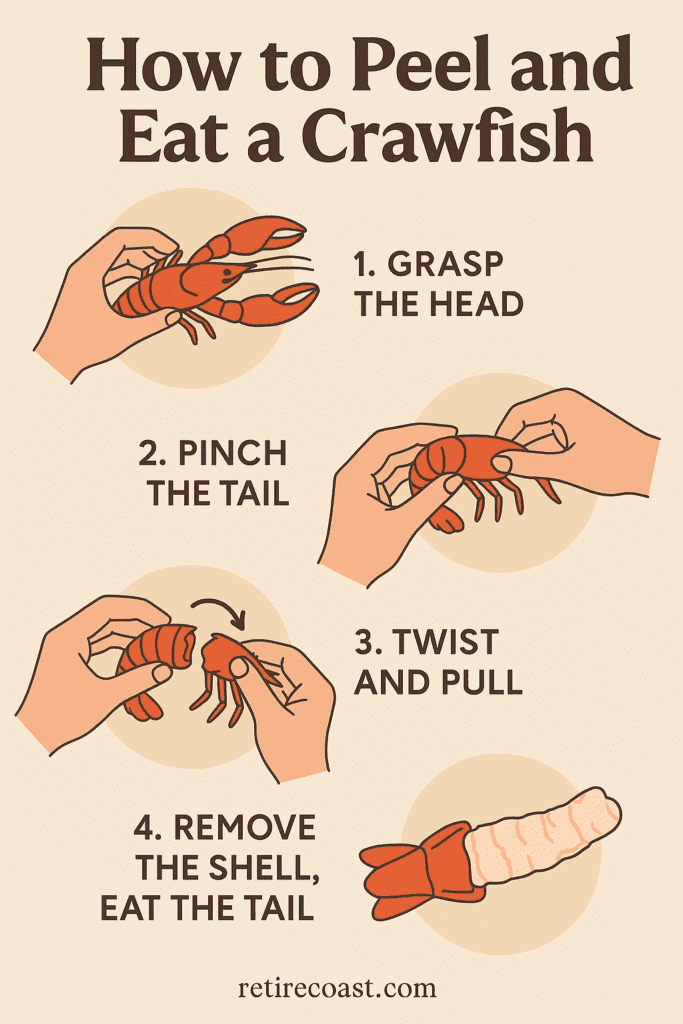
🦞 How to Enjoy Crawfish Like a Local
The tray is steaming, the spices are bold, and the smell is pure South Louisiana magic. It’s time to dive in.
Start by picking up a good one—nice firm shell, curled tail, maybe a little steam still rising off it. Hold it gently but with purpose. You’ve got a job to do.
With both hands, twist the head from the tail in one smooth motion. It should pop off cleanly with a little tug. Now pause—don’t throw that head away just yet.
Look at the tail, and find the first two shell segments, those little ridges or “vertebrae.” Gently crack and peel them back to loosen the meat. Now pinch the end of the tail and slowly pull—if you’ve done it right, the whole piece of sweet, juicy tail meat will slide out in one beautiful piece.
Take a bite. Savor the flavor—tender, a little spicy, perfectly seasoned.
Now back to that crawfish head. Tilt it up, place your mouth over the open end, and suck out the fat and juices inside. That’s where all the bold, briny, buttery flavor lives. It’s rich, spicy, and just a little decadent.
Toss the shell into the pile—maybe a plastic bowl or nearby trash can if you’re fancy. Wipe your fingers, grab a sip of beer or iced tea, lean back, and laugh with your friends.
Then? Repeat.
Because a good crawfish boil isn’t just about eating—it’s about rhythm, conversation, and savoring the moment, one mudbug at a time.
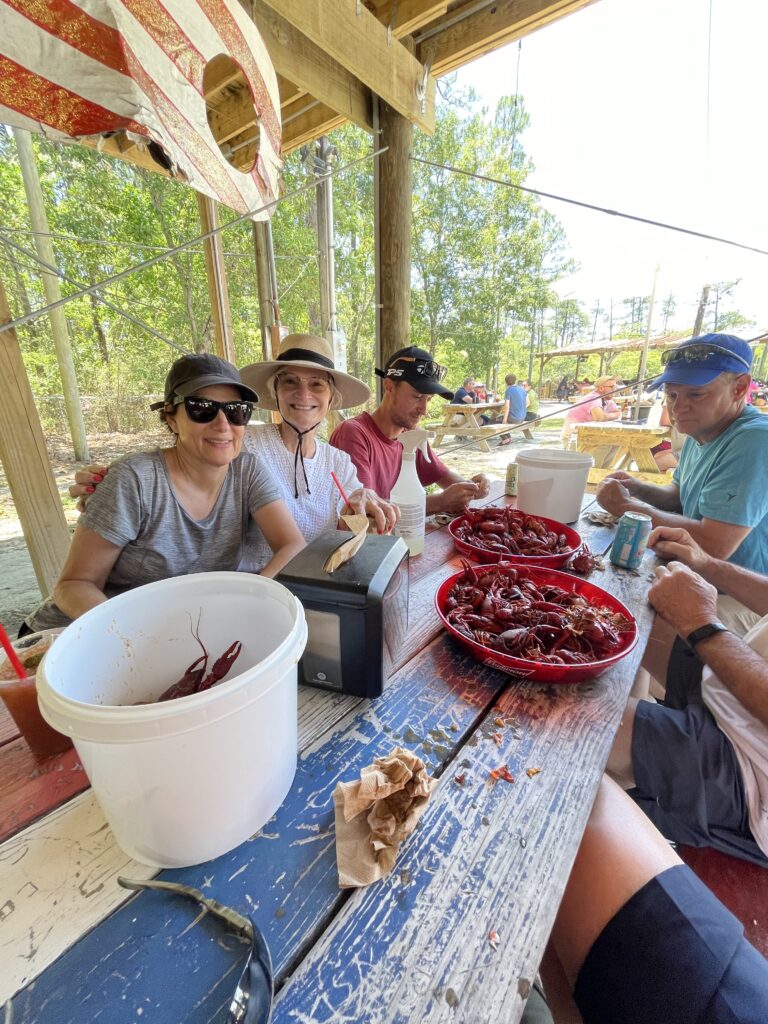
🍽️ Classic Dishes Made with Crawfish
While boiled crawfish is the star of many springtime gatherings in South Louisiana, the crawfish tail meat harvested from these delectable crustaceans is the real culinary treasure. This sweet, tender meat finds its way into some of the most iconic Cajun and Creole dishes in the United States.
Here are a few favorite dishes where crawfish shines:
- Crawfish Étouffée – A creamy, roux-based stew served over rice
- Crawfish Pie – A savory, spicy pie with a flaky crust
- Crawfish Monica – Creamy pasta tossed with crawfish and Cajun seasoning
- Crawfish Bisque – A rich soup sometimes made with stuffed crawfish heads
- Crawfish Cornbread – A spicy, cheesy Southern twist on cornbread
- Crawfish Po’Boys – Fried crawfish tails loaded onto French bread with remoulade
- Crawfish-Stuffed Catfish or Tilapia – Tail meat used as a rich stuffing for other fish
These dishes use fresh or frozen crawfish tails, often available in the seafood market during and after crawfish season. Now let’s dive into two beloved recipes.
🦐 Recipe 1: Classic Crawfish Étouffée
Serves 4–6
Ingredients:
- 1 lb crawfish tail meat
- 1 stick (½ cup) butter
- 1 small onion, finely chopped
- 1 bell pepper, finely chopped
- 2 stalks celery, chopped
- 3 cloves garlic, minced
- ¼ cup flour
- 2 cups chicken or seafood stock
- 1 tsp salt
- ½ tsp black pepper
- ½ tsp cayenne pepper (or to taste)
- 1 tsp paprika
- ½ tsp thyme
- 2 green onions, sliced
- 2 tbsp fresh parsley, chopped
- Cooked white rice (for serving)
Directions:
- In a large skillet or Dutch oven, melt butter over medium heat. Add onions, bell pepper, celery, and garlic. Sauté until soft (6–8 minutes).
- Stir in flour to make a blond roux. Cook and stir for 2–3 minutes, until it just starts to turn golden.
- Slowly add the stock, stirring constantly to avoid lumps.
- Add salt, black pepper, cayenne, paprika, and thyme. Simmer for 10 minutes.
- Add crawfish tails and cook for another 5–7 minutes. Taste and adjust seasoning.
- Stir in green onions and parsley just before serving.
- Serve over hot white rice.
🐟 Recipe 2: Crawfish-Stuffed Catfish Fillets
Serves 4
Ingredients:
- 4 catfish fillets (or any mild white fish like tilapia)
- 1 tbsp olive oil
- Salt and pepper
For the stuffing:
- ½ lb crawfish tail meat
- 2 tbsp butter
- ¼ cup onion, minced
- 2 cloves garlic, minced
- ¼ cup bell pepper, minced
- 1 egg, beaten
- ½ cup breadcrumbs
- 1 tsp Cajun seasoning
- Juice of ½ lemon
- 1 tbsp fresh parsley, chopped
Directions:
- Preheat oven to 375°F. Lightly oil a baking dish.
- In a skillet, melt butter over medium heat. Add onion, garlic, and bell pepper. Sauté until tender.
- Stir in crawfish tails, Cajun seasoning, and lemon juice. Remove from heat.
- Add breadcrumbs, beaten egg, and parsley. Mix until just combined.
- Season catfish fillets with salt and pepper. Place a generous scoop of stuffing on one end of each fillet and roll them up, seam-side down.
- Place in the baking dish, drizzle with olive oil, and bake for 20–25 minutes, until the fish flakes easily.
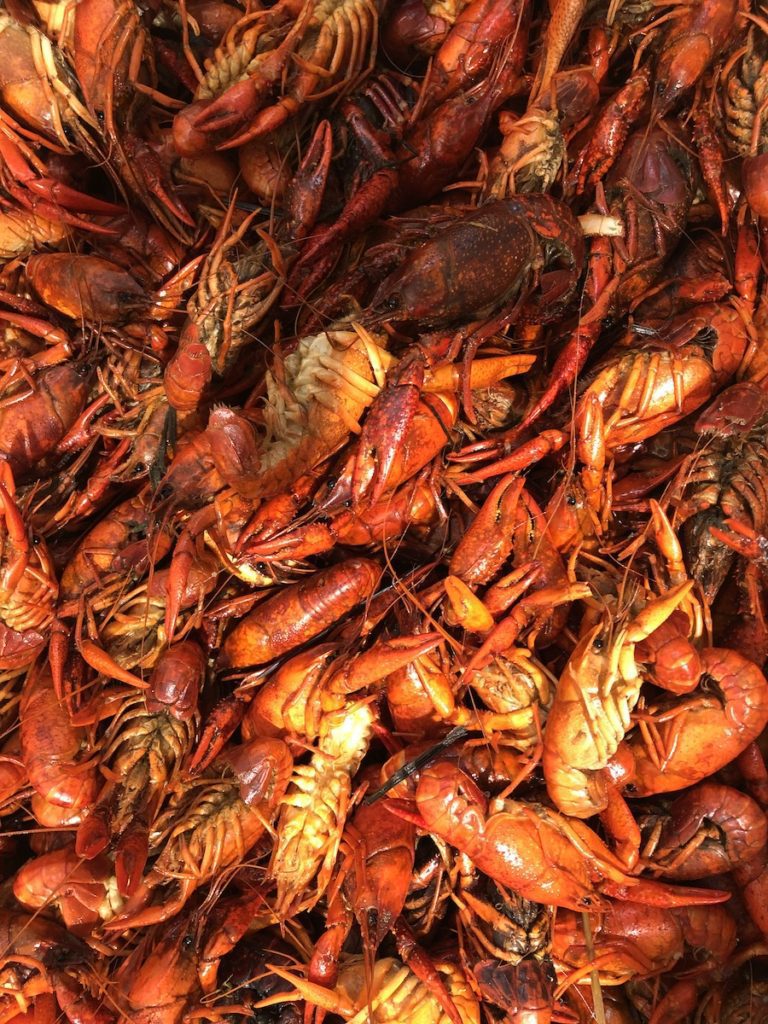
🦞 Let’s Recap
If you’ve made it this far, you’re now well-versed in the world of crawfish—from their roots in South Louisiana’s rice fields to their starring role in some of the South’s most delicious seafood dishes.
Here’s what we covered:
✅ What crawfish are and how they’re related to shrimp and lobster
✅ The farming process and how climate impacts crawfish production
✅ A step-by-step guide to creating the perfect crawfish boil
✅ Two flavorful recipes using crawfish tail meat: Étouffée & Stuffed Catfish
✅ The health benefits of crawfish and how they stack up nutritionally
Whether you’re planning your first boil or adding crawfish to your recipe rotation, we hope this guide helps you appreciate these delectable crustaceans even more.
This article is brought to you by RetireCoast.com – your source for real stories, Southern lifestyle, and expert tips on food, retirement, real estate, and coastal living.
Looking for more? Browse our site for travel tips, recipes, and everything the Gulf Coast has to offer.
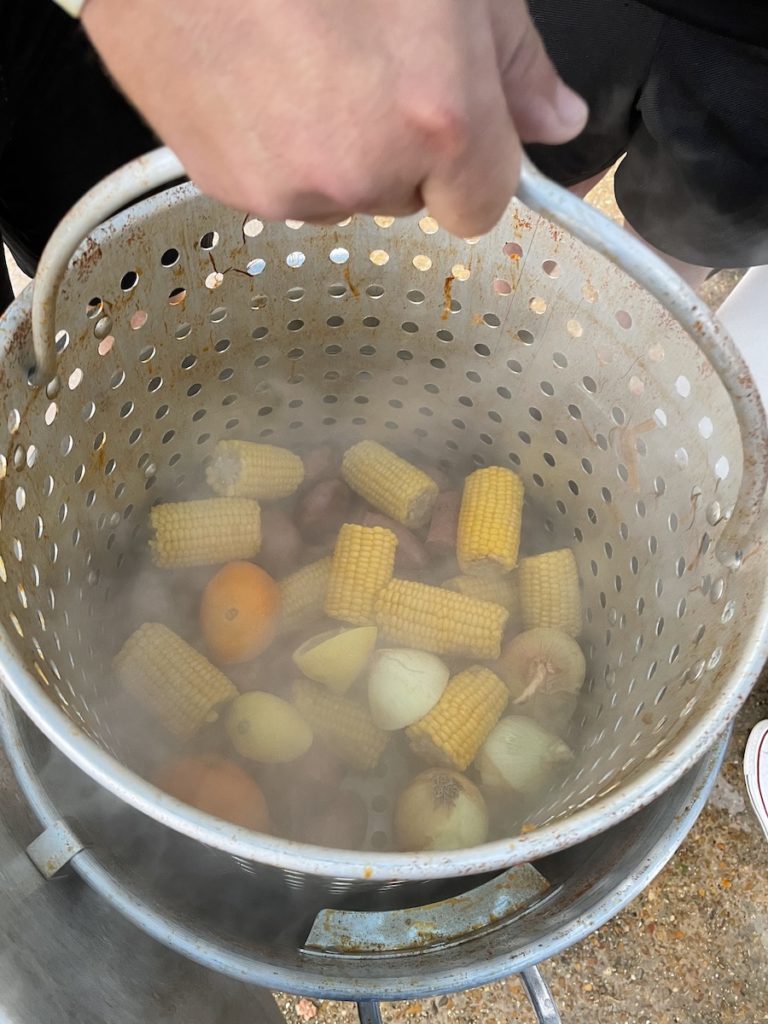
🌍 Crawfish Goes Global: How China Changed the Market
For decades, Louisiana was the heart of the global crawfish industry, with its fertile rice fields, ideal climate, and centuries-old Cajun cooking culture producing the highest quality farm-raised crawfish in the United States. But in recent years, that dominance has been challenged—by a surprising source: China.
🦞 How It Started
In the 1990s and early 2000s, Chinese companies began importing Louisiana crawfish, fascinated by its growing popularity in American cuisine and festivals. As demand for crawfish tail meat rose globally, Chinese entrepreneurs took notice. They studied Louisiana’s aquaculture methods, adapted the techniques, and began farming crawfish—especially red swamp crawfish, the same species dominant in Louisiana.
Within a short time, China developed its own large-scale crawfish industry, leveraging its low labor and processing costs to scale rapidly.
📈 A Crawfish Takeover
Today, China produces over 80% of the world’s crawfish supply, dwarfing Louisiana’s output. Most of these are processed frozen crawfish tails, exported back into the U.S. and used in dishes like crawfish étouffée, pasta, or stuffed fish. Their much lower prices have created significant economic pressure on Louisiana crawfish processors, farmers, and distributors who must compete with imports that can sell at a fraction of domestic prices.
📦 But There’s a Catch
Fortunately for Louisiana crawfish farmers, China cannot export live crawfish to the U.S. due to agricultural and environmental restrictions. This means the beloved boil-your-own tradition—where crawfish are enjoyed live, whole, and steaming hot—is still very much a Louisiana specialty.
😬 A Matter of Taste
While Chinese frozen crawfish are widely available and useful in recipes, many chefs and crawfish lovers claim there’s a noticeable difference in flavor. Due to the processing methods used in China, including preservatives and brining agents, some say the tail meat carries a chemical aftertaste that doesn’t compare to the sweet, clean flavor of Louisiana-grown crawfish.
🛒 The Takeaway
If you’re looking for fresh, flavorful crawfish, especially for a traditional boil, domestic Louisiana crawfish are your best bet. But if you’re making étouffée or another cooked dish, frozen imported tail meat can be a convenient alternative—just be mindful of taste quality and sourcing.
BUY AMERICAN, Support our domestic industry, the crawfish tastes better when it’s from Louisiana.
Recommendation: Always buy Louisiana-sourced crawfish. Asian-sourced crawfish come into the U.S. at lower prices and can adversely affect U.S. growers. By American, they taste better anyway. Always ask if eating at a restaurant.
Buy live Louisiana Crawfish shipped to your door in the United States
CRAWFISH FAQ
1. Where can I buy live crawfish?
You can purchase live crawfish from local seafood markets, specialty seafood distributors, or online from companies like Frugé Seafood Company or CajunCrawfish.com.2. Can I buy frozen crawfish tails?
Yes! Frozen crawfish tail meat is available year-round at many grocery chains and online. Look for “Product of USA” for best quality.3. What’s the crawfish season?
Crawfish season typically runs from late January to June, with peak season around Mardi Gras through May.4. Are crawfish live when offered for sale?
Yes. When labeled “live crawfish,” they are sold and shipped alive in sacks or ventilated containers.5. Do I buy crawfish based on size?
You can choose sizes like “select” or “jumbo,” but smaller crawfish often have a sweeter flavor. It’s mostly personal preference.6. Can I buy a complete boil with potatoes, sausage, and corn?
Yes. Many seafood markets and catering companies offer fully cooked or DIY crawfish boil kits.7. How much crawfish should I buy per person?
Plan for 3–5 pounds per person if crawfish is the main dish. Hearty eaters may need more.8. How do I store live crawfish before cooking?
Keep them in a cool, shaded container like a ventilated ice chest, covered with a damp towel. Do not submerge in water.9. How long does it take to cook crawfish?
Boil for 3–5 minutes, then soak in seasoned water for 15–30 minutes depending on your spice level preference.10. Can I freeze leftover crawfish?
Yes. You can freeze peeled tail meat or whole cooked crawfish. For best results, use airtight containers.11. What do crawfish taste like?
Crawfish taste like a mix between shrimp and lobster—mild, slightly sweet, and perfect for seasoning.12. Are crawfish healthy?
Yes. They are low in calories and fat, high in protein, and rich in B12, iron, and selenium.13. What’s the difference between wild-caught and farm-raised crawfish?
Wild-caught are from natural waterways. Farm-raised crawfish are cultivated in flooded rice fields. Both are tasty; farm-raised offer consistency.14. Can I order crawfish shipped to my door?
Yes. Many seafood companies offer overnight shipping of live crawfish during the season.15. Do I need special equipment to boil crawfish?
Yes. You’ll need a large pot, propane burner, strainer basket, paddle, and seasoning mix for a proper boil.16. How can I determine if crawfish come from Louisiana or Asia?
Look for “Product of USA” or “Product of Louisiana” on the label. Imported tail meat, often from China, must be labeled accordingly. Always ask your seller for sourcing info.Discover more from RetireCoast.com
Subscribe to get the latest posts sent to your email.

